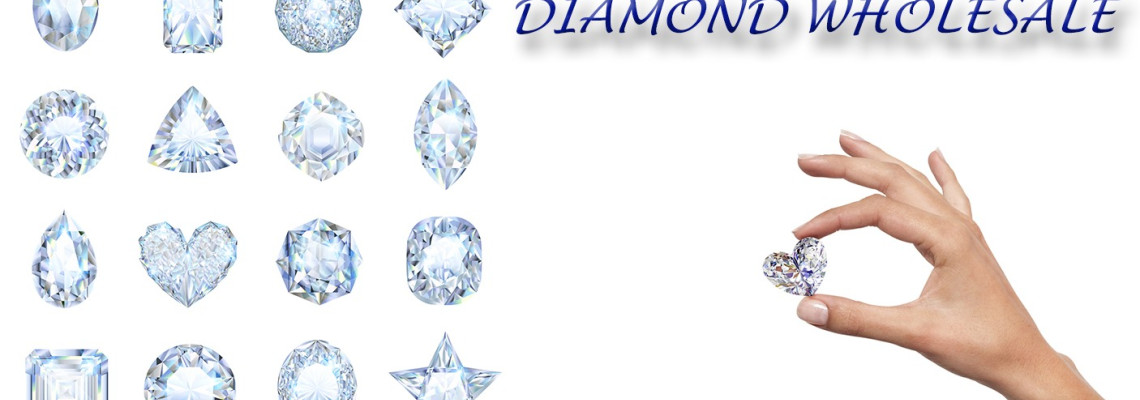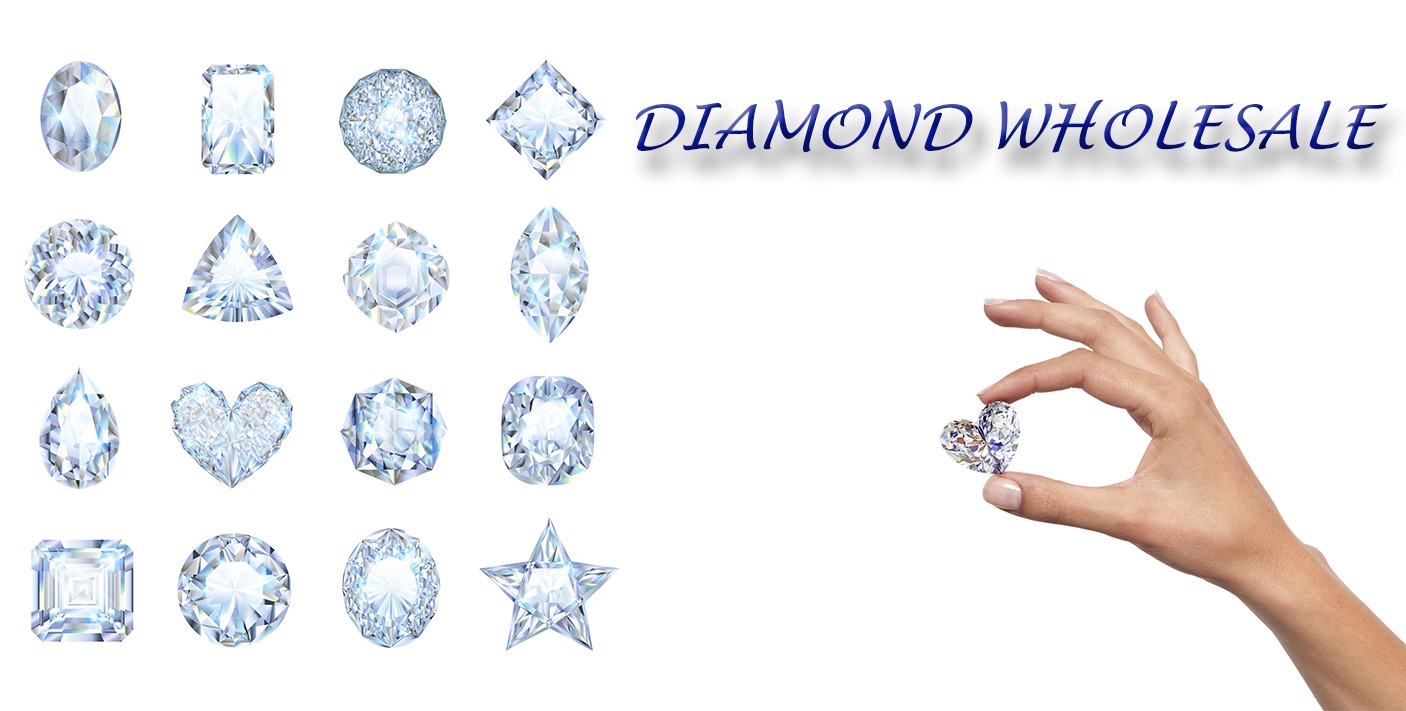Diamonds 101: How to Evaluate and Appreciate the Perfect Stone


Diamonds 101: How to Evaluate and Appreciate the Perfect Stone
Have you ever wondered what makes the perfect diamond? From clarity and color to carat weight and cut, understanding how to evaluate and appreciate the beauty of a diamond can be a captivating journey. In this guide, we delve into the world of diamonds, providing you with essential insights to make an informed decision when purchasing or admiring these exquisite gemstones.
Whether you're a seasoned gem enthusiast or just beginning to explore the allure of diamonds, this article will equip you with the knowledge to distinguish one stone from another. We'll demystify the 4Cs – cut, clarity, color, and carat – empowering you to confidently assess the quality and value of a diamond. Additionally, we'll uncover insider tips on recognizing the subtle nuances that set a remarkable diamond apart from the rest.
Embark on this sparkling exploration with us as we unravel the secrets of evaluating and appreciating the perfect diamond.

 (600 × 300px).jpg)
Understanding the 4Cs of Diamonds
When evaluating a diamond, understanding the 4Cs is crucial. The cut refers to how well the diamond's facets interact with light, determining its brilliance and sparkle. A well-cut diamond reflects light internally from one mirror-like facet to another and disperses it through the top, creating a display of scintillation and fire.
The clarity of a diamond is determined by the presence of external blemishes and internal inclusions. These imperfections can affect the overall brilliance and beauty of the stone. A diamond with minimal inclusions and blemishes is considered more valuable.
The color of a diamond ranges from colorless to light yellow or brown, with the absence of color being the most desirable. The Gemological Institute of America (GIA) grades diamond color on a scale from D (colorless) to Z (light yellow or brown).
The Importance of Diamond Certification
Diamond certification is a crucial aspect of purchasing a diamond. Reputable laboratories such as GIA, AGS, and IGI provide grading reports that detail the diamond's 4Cs. These reports offer an unbiased assessment of the diamond's quality and serve as a guarantee of its authenticity and value.
A certified diamond provides transparency and assurance, giving you confidence in the quality and characteristics of the stone. When considering a diamond purchase, always prioritize diamonds with recognized and reliable certifications.
It's essential to review the diamond's certification to ensure that it aligns with the seller's claims. A reputable seller should readily provide the diamond's certification and be transparent about its origins and characteristics.
Different Diamond Shapes and Cuts
Diamonds come in various shapes and cuts, each with its unique characteristics and appeal. The round brilliant cut is the most popular, known for its exceptional brilliance and fire. Other popular cuts include princess, emerald, pear, marquise, and oval, each offering distinct visual effects and qualities.
The choice of diamond shape and cut is a matter of personal preference, influenced by individual style and aesthetic preferences. While round diamonds are timeless and versatile, fancy-shaped diamonds can exude a sense of individuality and sophistication.
When evaluating diamond shapes and cuts, consider factors such as brilliance, fire, and overall visual appeal. The right combination of shape and cut can enhance the diamond's beauty and complement the wearer's style.
Evaluating Diamond Color and Clarity
The color and clarity of a diamond significantly impact its beauty and value. Colorless diamonds are exceptionally rare and highly sought after for their purity and brilliance. However, diamonds with slight color tints can also exhibit captivating beauty, especially when set in complementary metal settings.
Diamond clarity is assessed based on the presence of inclusions and blemishes. Flawless and internally flawless diamonds are incredibly rare and command premium prices. However, diamonds with slight inclusions that are not visible to the naked eye can offer exceptional value and beauty.
When evaluating diamond color and clarity, consider the intended setting and usage of the diamond. A well-chosen setting and design can enhance the diamond's appearance and minimize the impact of minor color and clarity characteristics.
Identifying the Right Diamond Setting
The choice of diamond setting is a crucial factor in showcasing the beauty of the stone. The setting not only secures the diamond but also enhances its brilliance and overall visual impact. Popular settings include prong, pavé, bezel, channel, and halo, each offering unique aesthetics and practical considerations.
When selecting a diamond setting, consider factors such as lifestyle, comfort, and desired visual effects. For active individuals, a secure and protective setting such as bezel or channel may be more suitable, while those seeking maximum brilliance may opt for a pavé or halo setting.
The metal choice for the setting, whether platinum, white gold, yellow gold, or rose gold, also influences the diamond's appearance. The right combination of diamond setting and metal can elevate the stone's beauty and create a harmonious aesthetic.
Tips for Choosing the Perfect Diamond
Choosing the perfect diamond involves considering various factors beyond the 4Cs. Assess the diamond's overall symmetry, proportion, and polish, as these elements contribute to its visual appeal and sparkle. A well-proportioned and symmetrical diamond can exhibit superior brilliance and scintillation.
Consider the diamond's fluorescence, which refers to its reaction to ultraviolet light. While faint to medium fluorescence can enhance a diamond's appearance, strong fluorescence may affect its transparency and color. Understanding fluorescence can guide you in making an informed decision when selecting a diamond.
Additionally, seek guidance from reputable jewelers and gemologists when choosing a diamond. Their expertise and insights can provide valuable perspectives and ensure that you make a well-informed decision based on your preferences and budget.
Diamond Care and Maintenance
Proper care and maintenance are essential for preserving the beauty and brilliance of a diamond. Regular cleaning with mild soap and a soft brush can remove accumulated dirt and oils, restoring the diamond's luster and sparkle. Avoid harsh chemicals and abrasive materials that can damage the diamond and its setting.
Periodic professional cleaning and inspection by a qualified jeweler can address any potential issues and ensure the diamond's integrity and security. Inspections can identify loose prongs, worn settings, or other concerns that may compromise the diamond's safety and appearance.
When not wearing the diamond, store it in a separate compartment or pouch to prevent it from coming into contact with other jewelry pieces that can cause scratches or damage. Proper storage and care prolong the longevity and beauty of the diamond.
The Value of Ethical and Conflict-Free Diamonds
In today's socially conscious world, the ethical sourcing of diamonds is a significant consideration for many consumers. Ethical and conflict-free diamonds are sourced and produced under responsible and sustainable practices, ensuring that they do not contribute to civil conflicts or human rights abuses.
Look for diamonds that are certified as ethically sourced, such as those from mines and suppliers that adhere to industry-recognized ethical standards. These diamonds provide assurance that they have been obtained through legitimate and ethical means, supporting fair labor practices and environmental responsibility.
By choosing ethical and conflict-free diamonds, you not only contribute to positive social and environmental impacts but also enjoy the peace of mind that your diamond purchase aligns with ethical values and principles.
Diamond Investment and Resale ConsiderationsWhile diamonds are cherished for their beauty and symbolism, they can also be considered as investments. Rare and exceptional diamonds, especially those with unique characteristics or historical significance, can appreciate in value over time. Factors such as rarity, provenance, and market demand influence a diamond's investment potential.
When considering diamond investment, seek guidance from experienced diamond professionals and investment advisors who can provide insights into market trends and potential returns. Understanding the factors that contribute to a diamond's investment value can guide you in making informed decisions.
In the event of considering diamond resale, having a well-documented certification and provenance can enhance the diamond's appeal and value. Transparency and authenticity are critical factors that influence the resale value and marketability of a diamond.
10: Conclusion
In conclusion, the journey to evaluating and appreciating the perfect diamond is a fascinating exploration of beauty, craftsmanship, and value. By understanding the 4Cs – cut, clarity, color, and carat – and considering factors such as diamond certification, shape and cut, color and clarity, setting, and ethical considerations, you can make informed decisions when choosing and admiring diamonds.
Whether you're purchasing a diamond for a special occasion, as an investment, or simply to celebrate love and beauty, the knowledge gained from this guide empowers you to appreciate the exquisite allure of diamonds and make choices that resonate with your preferences and values.
Embark on this journey with confidence, knowing that the perfect diamond awaits, ready to captivate hearts and endure as a timeless symbol of elegance and enduring beauty.

Have you ever wondered what makes the perfect diamond? From clarity and color to carat weight and cut, understanding how to evaluate and appreciate the beauty of a diamond can be a captivating journey. In this guide, we delve into the world of diamonds, providing you with essential insights to make an informed decision when purchasing or admiring these exquisite gemstones.
Whether you're a seasoned gem enthusiast or just beginning to explore the allure of diamonds, this article will equip you with the knowledge to distinguish one stone from another. We'll demystify the 4Cs – cut, clarity, color, and carat – empowering you to confidently assess the quality and value of a diamond. Additionally, we'll uncover insider tips on recognizing the subtle nuances that set a remarkable diamond apart from the rest.
Embark on this sparkling exploration with us as we unravel the secrets of evaluating and appreciating the perfect diamond.

 (600 × 300px).jpg)
When evaluating a diamond, understanding the 4Cs is crucial. The cut refers to how well the diamond's facets interact with light, determining its brilliance and sparkle. A well-cut diamond reflects light internally from one mirror-like facet to another and disperses it through the top, creating a display of scintillation and fire.
The clarity of a diamond is determined by the presence of external blemishes and internal inclusions. These imperfections can affect the overall brilliance and beauty of the stone. A diamond with minimal inclusions and blemishes is considered more valuable.
The color of a diamond ranges from colorless to light yellow or brown, with the absence of color being the most desirable. The Gemological Institute of America (GIA) grades diamond color on a scale from D (colorless) to Z (light yellow or brown).
Diamond certification is a crucial aspect of purchasing a diamond. Reputable laboratories such as GIA, AGS, and IGI provide grading reports that detail the diamond's 4Cs. These reports offer an unbiased assessment of the diamond's quality and serve as a guarantee of its authenticity and value.
A certified diamond provides transparency and assurance, giving you confidence in the quality and characteristics of the stone. When considering a diamond purchase, always prioritize diamonds with recognized and reliable certifications.
It's essential to review the diamond's certification to ensure that it aligns with the seller's claims. A reputable seller should readily provide the diamond's certification and be transparent about its origins and characteristics.
Diamonds come in various shapes and cuts, each with its unique characteristics and appeal. The round brilliant cut is the most popular, known for its exceptional brilliance and fire. Other popular cuts include princess, emerald, pear, marquise, and oval, each offering distinct visual effects and qualities.
The choice of diamond shape and cut is a matter of personal preference, influenced by individual style and aesthetic preferences. While round diamonds are timeless and versatile, fancy-shaped diamonds can exude a sense of individuality and sophistication.
When evaluating diamond shapes and cuts, consider factors such as brilliance, fire, and overall visual appeal. The right combination of shape and cut can enhance the diamond's beauty and complement the wearer's style.
The color and clarity of a diamond significantly impact its beauty and value. Colorless diamonds are exceptionally rare and highly sought after for their purity and brilliance. However, diamonds with slight color tints can also exhibit captivating beauty, especially when set in complementary metal settings.
Diamond clarity is assessed based on the presence of inclusions and blemishes. Flawless and internally flawless diamonds are incredibly rare and command premium prices. However, diamonds with slight inclusions that are not visible to the naked eye can offer exceptional value and beauty.
When evaluating diamond color and clarity, consider the intended setting and usage of the diamond. A well-chosen setting and design can enhance the diamond's appearance and minimize the impact of minor color and clarity characteristics.
The choice of diamond setting is a crucial factor in showcasing the beauty of the stone. The setting not only secures the diamond but also enhances its brilliance and overall visual impact. Popular settings include prong, pavé, bezel, channel, and halo, each offering unique aesthetics and practical considerations.
When selecting a diamond setting, consider factors such as lifestyle, comfort, and desired visual effects. For active individuals, a secure and protective setting such as bezel or channel may be more suitable, while those seeking maximum brilliance may opt for a pavé or halo setting.
The metal choice for the setting, whether platinum, white gold, yellow gold, or rose gold, also influences the diamond's appearance. The right combination of diamond setting and metal can elevate the stone's beauty and create a harmonious aesthetic.
Choosing the perfect diamond involves considering various factors beyond the 4Cs. Assess the diamond's overall symmetry, proportion, and polish, as these elements contribute to its visual appeal and sparkle. A well-proportioned and symmetrical diamond can exhibit superior brilliance and scintillation.
Consider the diamond's fluorescence, which refers to its reaction to ultraviolet light. While faint to medium fluorescence can enhance a diamond's appearance, strong fluorescence may affect its transparency and color. Understanding fluorescence can guide you in making an informed decision when selecting a diamond.
Additionally, seek guidance from reputable jewelers and gemologists when choosing a diamond. Their expertise and insights can provide valuable perspectives and ensure that you make a well-informed decision based on your preferences and budget.
Proper care and maintenance are essential for preserving the beauty and brilliance of a diamond. Regular cleaning with mild soap and a soft brush can remove accumulated dirt and oils, restoring the diamond's luster and sparkle. Avoid harsh chemicals and abrasive materials that can damage the diamond and its setting.
Periodic professional cleaning and inspection by a qualified jeweler can address any potential issues and ensure the diamond's integrity and security. Inspections can identify loose prongs, worn settings, or other concerns that may compromise the diamond's safety and appearance.
When not wearing the diamond, store it in a separate compartment or pouch to prevent it from coming into contact with other jewelry pieces that can cause scratches or damage. Proper storage and care prolong the longevity and beauty of the diamond.
In today's socially conscious world, the ethical sourcing of diamonds is a significant consideration for many consumers. Ethical and conflict-free diamonds are sourced and produced under responsible and sustainable practices, ensuring that they do not contribute to civil conflicts or human rights abuses.
Look for diamonds that are certified as ethically sourced, such as those from mines and suppliers that adhere to industry-recognized ethical standards. These diamonds provide assurance that they have been obtained through legitimate and ethical means, supporting fair labor practices and environmental responsibility.
By choosing ethical and conflict-free diamonds, you not only contribute to positive social and environmental impacts but also enjoy the peace of mind that your diamond purchase aligns with ethical values and principles.
While diamonds are cherished for their beauty and symbolism, they can also be considered as investments. Rare and exceptional diamonds, especially those with unique characteristics or historical significance, can appreciate in value over time. Factors such as rarity, provenance, and market demand influence a diamond's investment potential.
When considering diamond investment, seek guidance from experienced diamond professionals and investment advisors who can provide insights into market trends and potential returns. Understanding the factors that contribute to a diamond's investment value can guide you in making informed decisions.
In the event of considering diamond resale, having a well-documented certification and provenance can enhance the diamond's appeal and value. Transparency and authenticity are critical factors that influence the resale value and marketability of a diamond.
In conclusion, the journey to evaluating and appreciating the perfect diamond is a fascinating exploration of beauty, craftsmanship, and value. By understanding the 4Cs – cut, clarity, color, and carat – and considering factors such as diamond certification, shape and cut, color and clarity, setting, and ethical considerations, you can make informed decisions when choosing and admiring diamonds.
Whether you're purchasing a diamond for a special occasion, as an investment, or simply to celebrate love and beauty, the knowledge gained from this guide empowers you to appreciate the exquisite allure of diamonds and make choices that resonate with your preferences and values.
Embark on this journey with confidence, knowing that the perfect diamond awaits, ready to captivate hearts and endure as a timeless symbol of elegance and enduring beauty.























